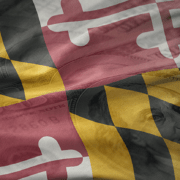Ways to manage the limit on the business interest expense deduction
Prior to the enactment of the Tax Cuts and Jobs Act (TCJA), businesses were able to claim a tax deduction for most business-related interest expense. The TCJA created Section 163(j), which generally limits deductions of business interest, with certain exceptions.
If your business has significant interest expense, it’s important to understand the impact of the deduction limit on your tax bill. The good news is there may be ways to soften the tax bite in 2025.
The nuts and bolts
Unless your company is exempt from Sec. 163(j), your maximum business interest deduction for the tax year equals the sum of:
- 30% of your company’s adjusted taxable income (ATI),
- Your company’s business interest income, if any, and
- Your company’s floor plan financing interest, if any.
Assuming your company doesn’t have significant business interest income or floor plan financing interest expense, the deduction limitation is roughly equal to 30% of ATI.
Your company’s ATI is its taxable income, excluding:
- Nonbusiness income, gain, deduction or loss,
- Business interest income or expense,
- Net operating loss deductions, and
- The 20% qualified business income deduction for pass-through entities.
When Sec. 163(j) first became law, ATI was computed without regard to depreciation, amortization or depletion. But for tax years beginning after 2021, those items are subtracted in calculating ATI, shrinking business interest deductions for companies with significant depreciable assets.
Deductions disallowed under Sec. 163(j) may be carried forward indefinitely and treated as business interest expense paid or accrued in future tax years. In subsequent tax years, the carryforward amount is applied as if it were incurred in that year, and the limitation for that year will determine how much of the disallowed interest can be deducted. There are special rules for applying the deduction limit to pass-through entities, such as partnerships, S corporations and limited liability companies that are treated as partnerships for tax purposes.
Small businesses are exempt from the business interest deduction limit. These are businesses whose average annual gross receipts for the preceding three tax years don’t exceed a certain threshold. (There’s an exception if the business is treated as a “tax shelter.”) To prevent larger businesses from splitting themselves into small entities to qualify for the exemption, certain related businesses must aggregate their gross receipts for purposes of the threshold.
Ways to avoid the limit
Some real estate and farming businesses can opt out of the business interest deduction limit and therefore avoid it or at least reduce its impact. Real estate businesses include those that engage in real property development, redevelopment, construction, reconstruction, acquisition, conversion, rental, operation, management, leasing or brokerage.
Remember that opting out of the interest deduction limit comes at a cost. If you do so, you must reduce depreciation deductions for certain business property by using longer recovery periods. To determine whether opting out will benefit your business, you’ll need to weigh the tax benefit of unlimited interest deductions against the tax cost of lower depreciation deductions.
Another tax-reduction strategy is capitalizing interest expense. Capitalized interest isn’t treated as interest for purposes of the Sec. 163(j) deduction limit. The tax code allows businesses to capitalize certain overhead costs, including interest, related to the acquisition or production of property.
Interest capitalized to equipment or other fixed assets can be recovered over time through depreciation, while interest capitalized to inventory can be deducted as part of the cost of goods sold. We can crunch the numbers to determine which strategy would provide a better tax advantage for your business.
You also may be able to mitigate the impact of the deduction limit by reducing your interest expense. For example, you might rely more on equity than debt to finance your business or pay down debts when possible. Or you could generate interest income (for example, by extending credit to customers) to offset some interest expense.
Weigh your options
Unfortunately, the business interest deduction limitation isn’t one of the many provisions of the Tax Cuts and Jobs Act scheduled to expire at the end of 2025. But it’s possible Congress could act to repeal the limitation or alleviate its impact. If your company is affected by the business interest deduction limitation, contact us to discuss the impact on your tax bill. We can help assess what’s right for your situation.
© 2025













